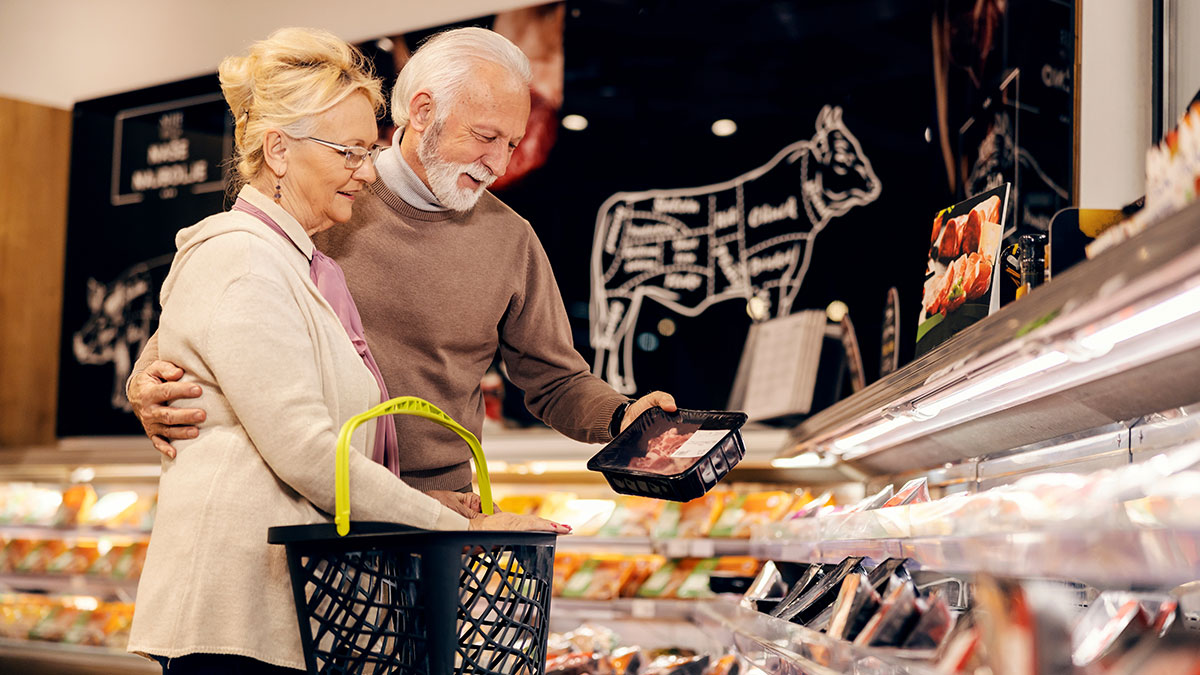By: Allison Febrey, Manager, Research and Insights, FMI, and Rick Tibbetts, Communications Specialist, FMI
 We all remember the seemingly boundless enthusiasm surrounding sourdough bread during the height of the COVID-19 pandemic. Scrolling through our Facebook timelines, both Rick and I witnessed a flood of photos from friends eager to share their crusty creations. In addition to sourdough-mania, there seemed to be an influx of culinary creativity in general. Images of eye-popping entrees, full-bodied beverages and decadent deserts filled up content streams, along with convenient how-to guides and recipes. With much of society avoiding restaurants and other public spaces, many individuals and families sought new ways to make at-home mealtimes exciting. This led to a largescale reintroduction to the kitchen for those who normally opted for takeout options and bolstered cooking skills nationwide.
We all remember the seemingly boundless enthusiasm surrounding sourdough bread during the height of the COVID-19 pandemic. Scrolling through our Facebook timelines, both Rick and I witnessed a flood of photos from friends eager to share their crusty creations. In addition to sourdough-mania, there seemed to be an influx of culinary creativity in general. Images of eye-popping entrees, full-bodied beverages and decadent deserts filled up content streams, along with convenient how-to guides and recipes. With much of society avoiding restaurants and other public spaces, many individuals and families sought new ways to make at-home mealtimes exciting. This led to a largescale reintroduction to the kitchen for those who normally opted for takeout options and bolstered cooking skills nationwide.
Unfortunately, this newfound fanfare for food has waned over the past year with the reopening of restaurants and gradual return to pre-pandemic norms. According to FMI’s U.S. Grocery Shopper Trends 2022: Future Outlook report, more consumers are experiencing cooking fatigue. Nineteen percent say that they “love cooking,” compared to 23% in 2021. Those who love to cook are those who feel they have good or excellent cooking skills. Conversely, those who prefer not to cook do not feel they have strong cooking skills. Much of this is due to interest, but some might be due to inspiration or lack thereof.
Food retailers can take advantage of this inspiration deficit by offering new and traditional resources to help shoppers get into the grocery groove. When asked which media were most effective in sparking new mealtime ideas, 31% of shoppers selected recipe websites, apps or food blogs, 29% chose social media and 24% cookbooks or magazines. Therefore, food retailers would be wise to leverage their mobile apps, website and printed materials to help customers connect store offerings with otherwise unthought of snacks, drinks and meals.
The report also found a reduction in the share of consumers who cook a meal at home seven days a week – 25% this year compared to 28% in 2021. The same goes for those who say someone other than themselves cooks seven times a week at home, with a mere 11% claiming to fit this lifestyle versus 15% the year prior.
Despite current levels of lethargy in the kitchen, the period of increased at-home cooking did make some people more efficient. Three-quarters (74%) of respondents say it takes them less than one hour to make their meals, and 30% say it takes them less than 30 minutes – much faster than recent years. Heightened kitchen IQ has also reinforced savvy meal planning habits. Forty-six percent of grocery shoppers report that they plan their meals the same day but earlier, while 30% say they plan their meals at least a couple days in advance.
With more shoppers seeking efficiency and convenience, food retailers and suppliers have an opportunity to promote their plentiful meal solution, meal kit and fresh prepared options. In fact, the Future Outlook report reveals that consumers are already buying more of these higher-quality items – meal kits (8%) and fresh prepared (8%) – despite shopper concerns with food inflation. Furthermore, the rising cost of other foodservice options likely benefit the fresh prepared and meal kit categories, as they can serve as more affordable substitutes.
To learn more about new and emerging consumer behaviors, download the full U.S. Grocery Shopper Trends 2022: Future Outlook report.


 Industry Topics address your specific area of expertise with resources, reports, events and more.
Industry Topics address your specific area of expertise with resources, reports, events and more.
 Our Research covers consumer behavior and retail operation benchmarks so you can make informed business decisions.
Our Research covers consumer behavior and retail operation benchmarks so you can make informed business decisions.
 Events and Education including online and in-person help you advance your food retail career.
Events and Education including online and in-person help you advance your food retail career.
 Food Safety training, resources and guidance that help you create a company food safety culture.
Food Safety training, resources and guidance that help you create a company food safety culture.
 Government Affairs work — federal and state — on the latest food industry policy, regulatory and legislative issues.
Government Affairs work — federal and state — on the latest food industry policy, regulatory and legislative issues.
 Get Involved. From industry awards to newsletters and committees, these resources help you take advantage of your membership.
Get Involved. From industry awards to newsletters and committees, these resources help you take advantage of your membership.
 Best practices, guidance documents, infographics, signage and more for the food industry on the COVID-19 pandemic.
Best practices, guidance documents, infographics, signage and more for the food industry on the COVID-19 pandemic.
